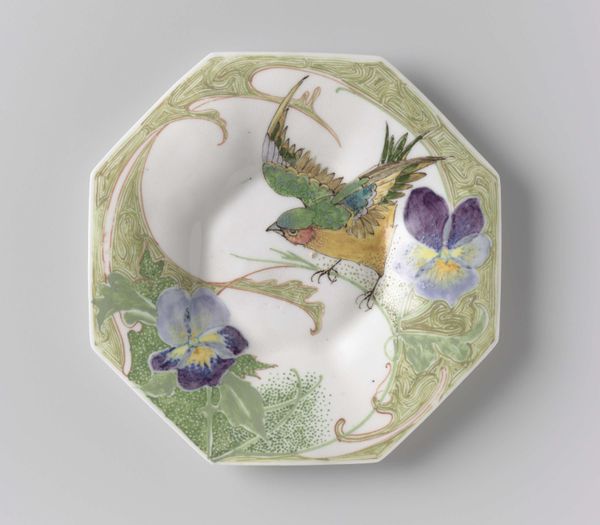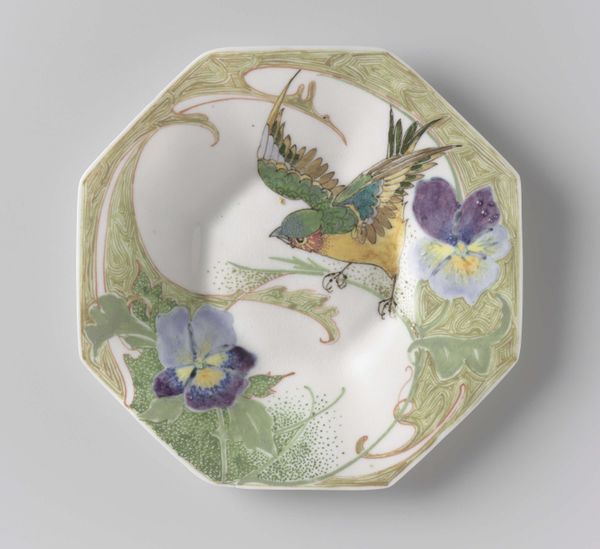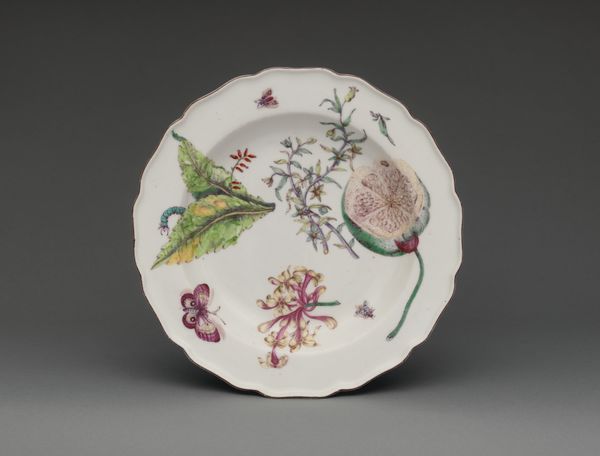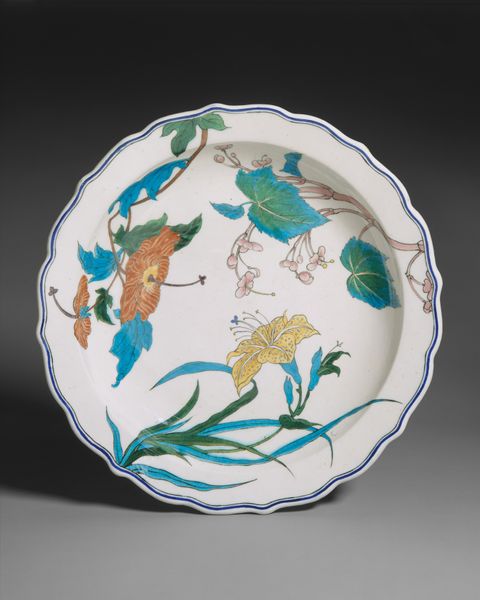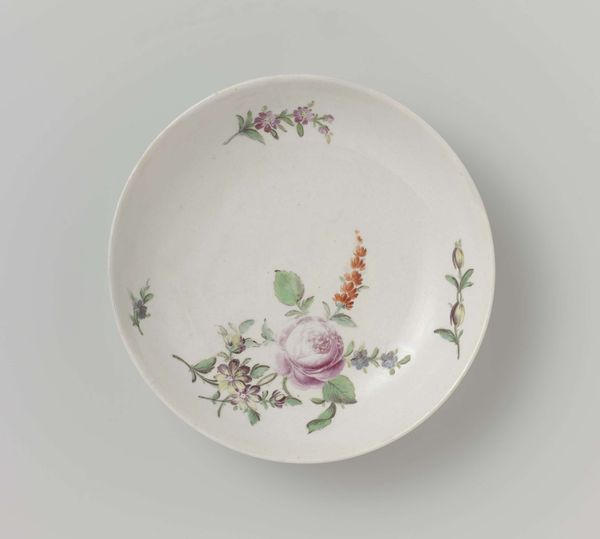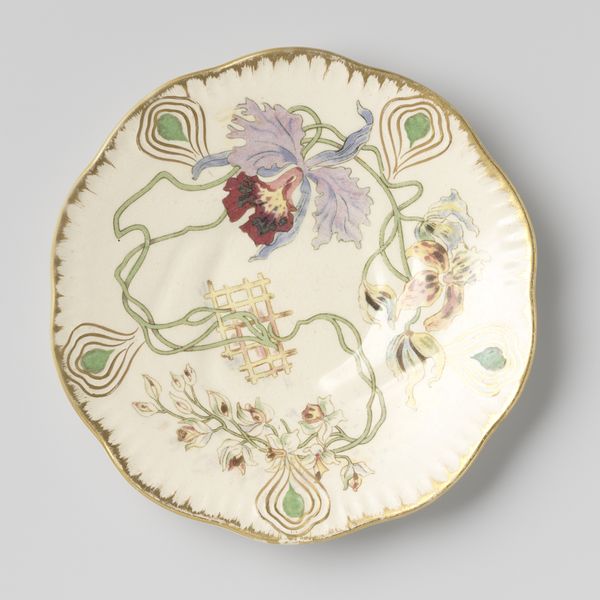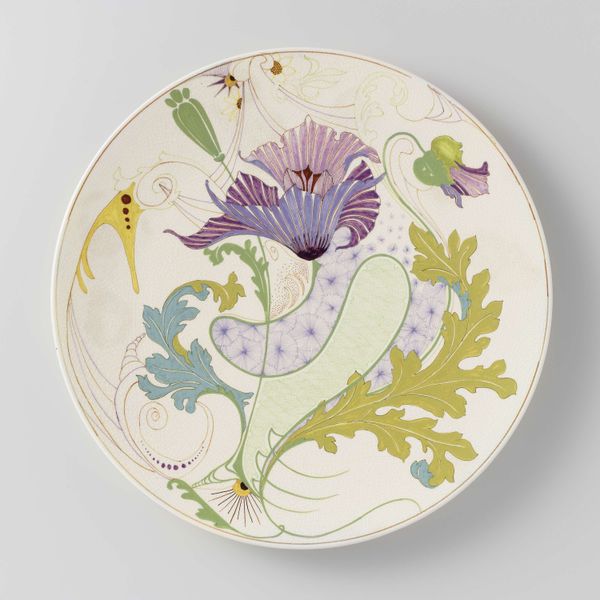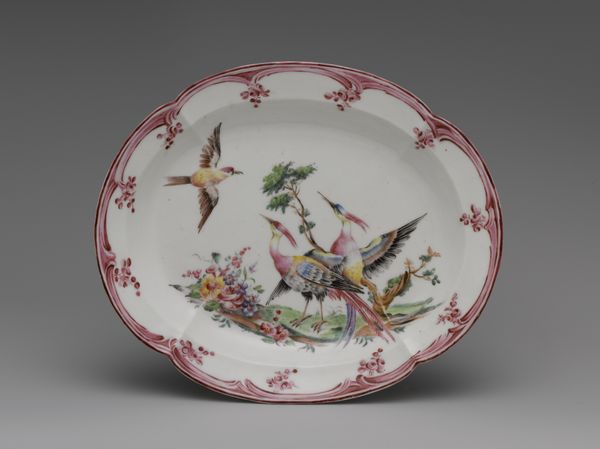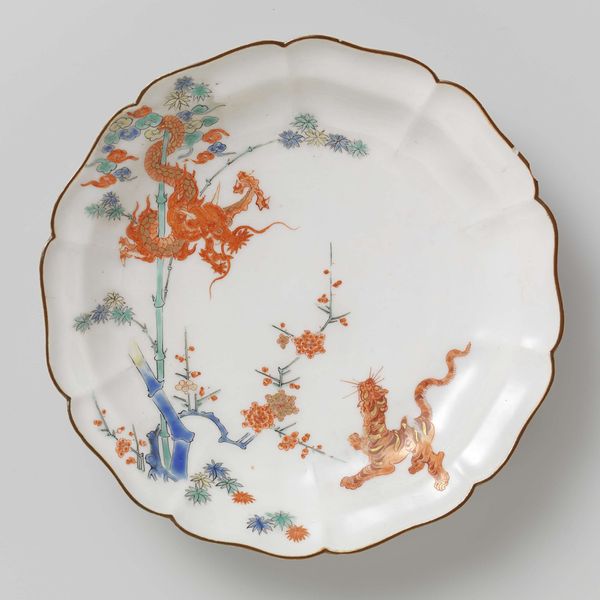
Schotel, deel van een servies, beschilderd met vogel en violen 1913
0:00
0:00
painting, ceramic
#
art-nouveau
#
painting
#
ceramic
#
stoneware
#
ceramic
Dimensions: height 0.9 cm, diameter 11.0 cm
Copyright: Rijks Museum: Open Domain
Curator: Let’s discuss this striking example of Dutch Art Nouveau, a ceramic dish made in 1913 by the N.V. Haagsche Plateelfabriek Rozenburg, titled "Schotel, deel van een servies, beschilderd met vogel en violen". Editor: My initial reaction is that it feels both delicate and vibrant, the octagonal shape and creamy surface perfectly setting off the bird and violet design. It’s remarkably detailed! Curator: Absolutely. Rozenburg was renowned for pushing the boundaries of ceramic production. This piece showcases their refined techniques and the division of labor in their workshop, where specialized artists focused on distinct stages, from molding to painting. Each piece would have passed through many sets of hands, a carefully coordinated form of industrial production. Editor: Yes, and you can certainly see that high level of skill and care applied in the hand-painted details of the bird's feathers and the soft gradations of color in the violets. The curvilinear design, almost an embrace around the central image, adds a lovely dynamism, wouldn’t you say? Curator: The stylized flora and fauna are hallmarks of Art Nouveau, reflecting a broader social and artistic yearning for harmony with nature amid increasing industrialization. The piece functioned, presumably, as a display object within a bourgeoise home, part of a set meant to express the consumer's worldliness and cultivated sensibility. Editor: I see what you mean. Focusing on the object itself, I’m struck by the asymmetry of the design. The artist intentionally avoids a perfectly balanced composition, creating a sense of movement, an echo of the natural asymmetry we see in the botanical world. Curator: That conscious aesthetic choice, its departure from strictly academic or historical references, is exactly what made Rozenburg ceramics so modern. But understanding its production helps us grasp its broader appeal, situating it as part of the shift in artistic production and design that reflected a changing Dutch society. Editor: I appreciate the way the overall design blends functionality with beauty and the delicate palette that evokes such a refined yet simple atmosphere. It almost transports you to another world, wouldn’t you say? Curator: Indeed, its delicate charm and thoughtful design allows one to consider how shifting economic, labor and artistic structures were captured within objects we encounter.
Comments
No comments
Be the first to comment and join the conversation on the ultimate creative platform.

